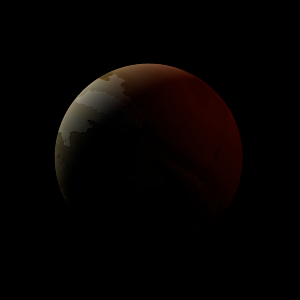|
|
Space Astro
|
Info for exoplanet "Pubya"
| Scientific (actual) data |
|---|
| Name | Kepler-1516 b |
| Planet status | Confirmed |
| Radius | 0.156 |
| Orbital period | 7.25932 |
| Discovered | 2016 |
| Updated | 2021-02-05 |
| Tconj | 2454960 |
| Publication | Announced on a website |
| Detection type | Primary Transit |
| Alternate names | 2MASS J19255870+4431246 b, K03685.02, KIC 8494410 b, KOI-3685 b, KOI-3685.02, WISE J192558.70+443124.3 b |
| Star name | Kepler-1516 |
| Right ascension | 291.5° |
| Declination | 44.52° |
| Mag j | 13.233 |
| Mag h | 12.947 |
| Mag k | 12.815 |
| Star distance | 872 |
| Star metallicity | 0.03 |
| Star mass | 1.04 |
| Star radius | 1.07 |
| Star age | 4.07 |
| Star temperature | 5904 |
| Star alternate names | 2MASS J19255870+4431246, KIC 8494410, KOI-3685, WISE J192558.70+443124.3 |
| Wikipedia article | Kepler-1516 b |
Back
| |
| Fictional info (?) |
|---|
| Suggested name | Pubya |
| Planet type | Cold planet |
| It is the coldest planetary atmosphere in its solar system, with a minimum temperature of 70°K (-203°C), and has a complex, layered cloud structure with hydrogen peroxide thought to make up the lowest clouds, and methane the uppermost layer of clouds.
As seen from Kepler-1516, in a frame of reference that rotates with the orbital motion, it appears to rotate only once every two years.
It may have had carbon monoxide oceans in the past, but these would have vaporized as the temperature rose due to a runaway greenhouse effect.
The volume of water ice in the south polar ice cap, if melted, would be sufficient to cover the entire planetary surface to a depth of 8 meters. |
| Atmosphere | Methane | 84% |
| Hydrogen peroxide | 9.4% |
| Carbon monoxide | 6.1% |
| 2H2O | 0.042% |
| Atmospheric pressure | 0.04 bar |
 |
| No known satellites |
| Google search for Pubya |
|
Website by Joachim Michaelis
|
|
|
|